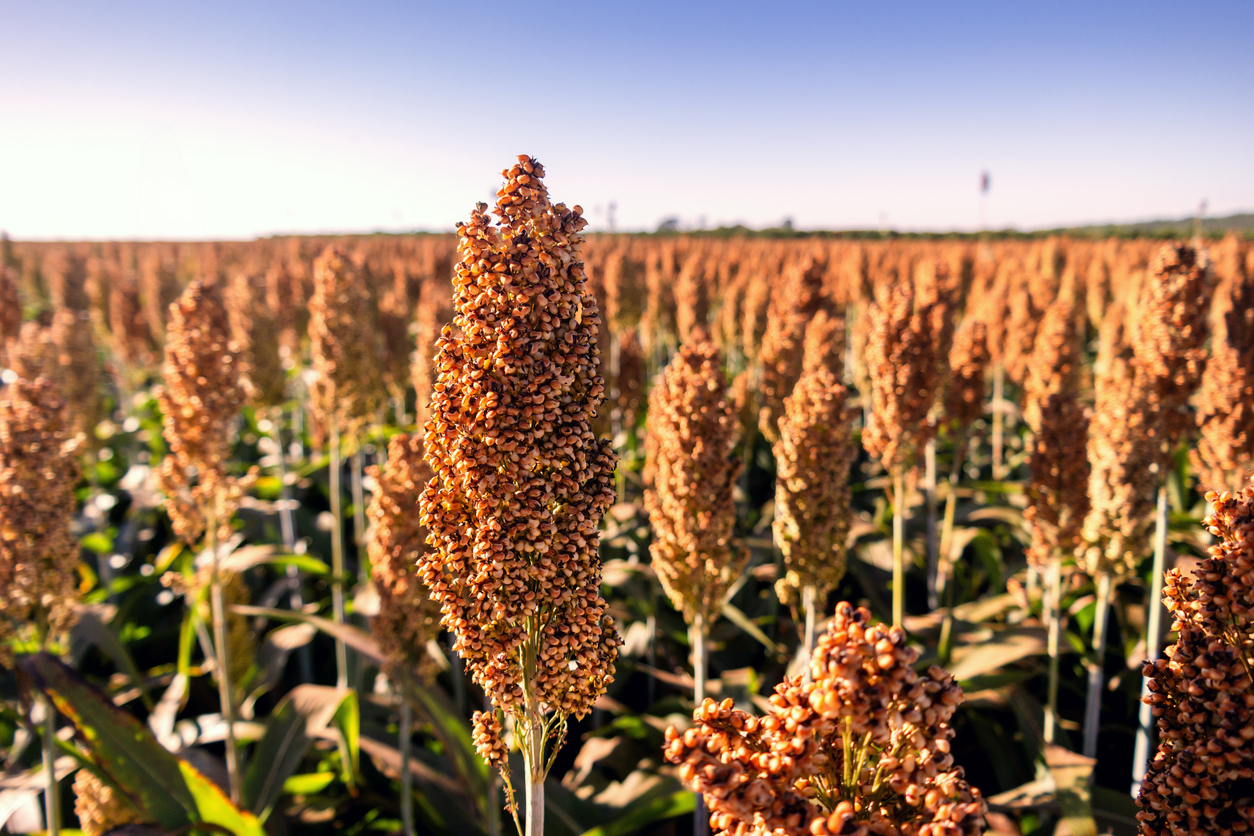The Scoop: The PR struggle to make sorghum a hot new food trend


If you’ve heard of sorghum, you may think of it as something used to feed pigs, or perhaps as a component in ethanol.
But the American-grown grain has the potential to become the next quinoa, especially as tariffs enhance the importance of grown-in-America products. Notably, it has twice as much protein as quinoa and four times as much as rice or corn – a major boon in a protein obsessed world. Sorghum can be popped like popcorn, used as the base for a grain bowl or made into beer, tea and syrup, according to the Wall Street Journal.
But the would-be super food has a few branding headwinds going against it. First is that name.
“The ‘sor’ is fine, but the ‘ghum’ implies maybe chewing gum,” said Claib Harris, head chef of a Kansas State University pub experimenting with recipes for the grain. “Maybe we could rebrand it into something else.”
Or that old-fashioned, gummy name could be a benefit.
“We like to think of sorghum as that under-the-radar rock star with a quirky name, just like açaí, chai or kombucha,” said Lanier Dabruzzi, director of nutrition and food innovation for the National Sorghum Producers.
Sorghum does actually have another name: milo. While that name might be cooler, evoking that boy you had a crush on in freshman math class, it also has a downside: that’s the name it’s known as on Kansas farms, where it’s used to slop pigs and cattle.
Why it matters: Doing PR for uncool food items is always tricky – but can yield huge dividends. Renaming the gnarly-sounding Patagonian toothfish to the exotic Chilean seabass pushed the delicious sea creature to the verge of extinction. A guerilla marketing campaign for kale turned it from a food known largely acting as a garnish on salad bars into the ubiquitous health food we know and tolerate today.
The successful food rebrand includes several elements: name changes, if needed, and helping people understand how to use the food. Think of quinoa: Once upon a time it was unknown outside of its native Andean highlands; now it’s whipped up in suburban homes around the world. Sorghum might just be the latest example of how PR can help change the way the world eats, if they can crack the code on making it sound appealing, approachable and healthy.
Milo is a way cooler name though. Just saying.
Editor’s Top Reads
- YouTube is the biggest podcast platform in the world, dominating the once audio only medium as many podcasts pivot to video. That leaves other distributors like Spotify scrambling. But Spotify is making a major gambit to catch up, paying out $100 million to creators since January, the New York Times reported. Rather than merely doing an advertising revenue split, as YouTube does, Spotify is incentivizing video uploads, as well as offering extra rewards when premium subscribers interact with their content. You know by now that podcasts are a vital part of media relations. But remember that these aren’t radio programs any longer. Many, especially the ones you most want to be on, are fully produced video events as well. That means your prep should include classic video training to ensure your executives look and act their best on camera.
- President Donald Trump’s rhetoric about and tariffs against Canada may have long-term implications for the nation’s trade relationship with the United States. One reporter for Marketplace said the word he heard most when speaking to Canadians about the shift in the relationship was “betrayal.” Already grocery stores in Canada are shifting, moving away from American produce to farther flung sources like Mexico, Peru and even Morocco. The overarching issue is the core component of PR: trust. “Once that trust is broken and you have to go somewhere else, you’ve done the work to look for something else, you’ve formed another relationship, and you don’t tend to go back to that,” James Foulds, founder of Border Giant, told Marketplace. This lesson holds true whether you’re dealing with international trade or unhappy customers. President Donald Trump seems in no hurry to rebuild that trust, once again saying that Canada should become the 51st state – this time on the day of Canada’s elections. The election was once heavily favored by the Conservative candidate, but Trump’s rhetoric is seen to have pushed the Liberal candidate to a narrow lead. How that will play out in today’s election and the new prime minister’s administration remains to be seen – but both seem to cast a wary eye to the U.S.
- Many colleges, including the University of North Carolina, are working with student athletes to become influencers. Now that the NCAA allows student athletes to earn money from their name, image and likeness while competing, they seem to be the perfect demographic to reach coveted audiences: the athletes are young, fit, often attractive, and boast a set of skills that show up well on camera – like crazy diving techniques or basketball tricks. UNC is among the schools working with influencer trainers to teach the student athletes how to profit from this opportunity. While the university doesn’t get a direct cut of money, they believe that enabling the athletes to earn will help them attract the best talent, the New York Times reported. It’s an abrupt heel-turn for the universities and NCAA who long fought the NIL rules, but now tout their involvement as a selling point. These athletes could be great influencer partners, especially if they have a bit of training under their belt from professionals, helping them foster the audiences and brand-safe behavior that can make a partnership shine.
Allison Carter is editorial director of PR Daily and Ragan.com. Follow her on LinkedIn.